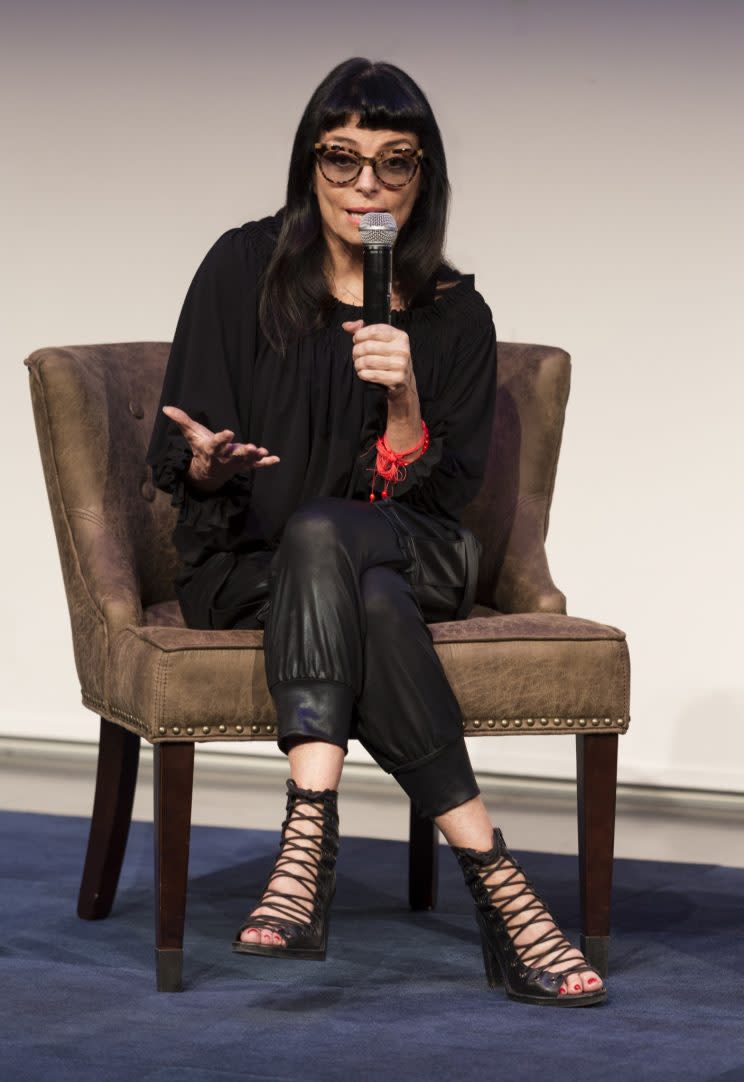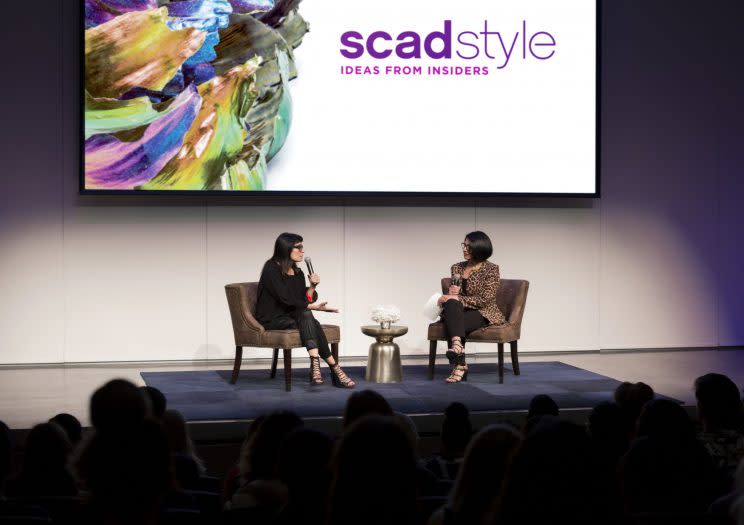Legendary Designer Norma Kamali Shares the Stories Behind Her Most Iconic Designs

In a business as fickle as fashion, only a handful of designers can lay claim to a 50-year career, and those who do — your Coco Chanels, your Yves Saint Laurents — are justifiably considered legends. And not only for their longevity. To have a lasting career in fashion is to deliver that elusive combination of innovation and timelessness that keeps customers coming back season after season, and that manages to capture the zeitgeist of multiple decades. The failure rate should tell you it’s not an easy feat.
On that very short list of designers who have dressed generations is Norma Kamali. Inspired by the freedom of Britain’s youthquake movement, Kamali opened her first boutique selling imported designs in New York in 1967. Soon she added her own. That many of those designs were a first, and were immensely influential, is a testament to her vision. Kamali gave us, among other things, the Sleeping Bag Coat, the high-heeled sneaker, clothes made of parachute fabric, and the world’s sexiest one-piece swimsuits (the red one famously worn by Farrah Fawcett now resides in the Smithsonian).
Before some enterprising trend forecaster thought to call it “athleisure,” Kamali turned gray sweatshirt fabric into a full collection of tops, pants, and dresses. In doing so, she prefigured a new, athletic-influenced, easy way of dressing that we all owe a debt to every time we pull on leggings to run to the grocery store. The quintessentially New York designer also partnered with brands like Everlast and Walmart to create lower-priced versions of her cutting-edge pieces, thus pioneering the designer collaboration.
Recently, Kamali gave a talk at SCADstyle, the annual fashion conference held at the Savannah College of Art and Design, in front of a rapt audience of students, press, and industry vets. That the audience was largely packed with young’uns whose parents may not have been born when Kamali began her business didn’t matter a bit — like all students of fashion (self-taught or otherwise), they were fully aware of Kamali’s stature in the industry and eager to receive her wisdom.
At her talk with SCAD professor and fashion historian Carmela Spinelli, Kamali outlined the history of some of her most iconic collections and pieces, from the coat that had an unexpected revival in the wake of 9/11 to the Parachute Collection, born of a friend’s betrayal. Read on for insights into how fashion history was made.

The Sleeping Bag Coat
“I was camping in the ’70s with a friend, and it was freezing cold. I kept wrapping my sleeping bag around me and darting out to use the bathroom in the woods. At one point, I thought ‘I should put sleeves on this thing and make a coat!’ I did that when I returned to New York. I use every part of the sleeping bag, and still use the same pattern today that I created in the ’70s.
“The Sleeping Bag Coat was a huge hit and has had many revivals. After 9/11, I went to my office to check my messages and was stunned to see I had message after message asking for the Sleeping Bag Coat. People were just desperate to buy one. It was a very hot and muggy September in New York, and I thought, ‘Why do people want coats?’ But I called everyone back to work at my factory, and we began making them. They’re a psychological safe place for people.”
The Parachute Collection
“Back in the ’70s, Halston’s palace was a block away from my boutique. Halston at the time had an assistant named Victor Hugo who would come hang out at my shop — he knew everything I did. One day I saw a swimsuit on the cover of Time magazine that looked very much like one of mine — but it was credited to Halston. I knew it was [Hugo] who had done that, and I felt so betrayed because he had been a friend of mine. I had WWD calling me for a comment. They ran an article showing both swimsuits side by side.
“So Victor called me up and said, ‘I owe you big time. Halston is away this weekend. Come to his house — I have a surprise for you.’ So I went to Halston’s house, which had a huge, two-story living room with a balcony over it. Victor sat me on an ottoman and said, ‘Sit there and close your eyes.’ He stood on the balcony over me and dropped a parachute on my head and said, ‘I know you can make fashion out of anything, and I know you’ll do great things with this fabric. I hope it makes it up to you.’ It was a beautiful silk parachute from the Korean War, and I used it to make him a jumpsuit, plus tops, pants, bags, all kinds of other pieces. The parachute pieces have been some of my biggest sellers.”

Sweats
“Back in the late ’70s, the only place you could get gray sweatshirts or sweatpants was the Army-Navy store, and people only wore them for yard work. I decided to do sweatshirts as part of my swim collection as cover-ups — they look great with a tan. So I started to do that, but within a few days I had a whole collection — I made evening gowns, jumpsuits, tops, pants out of this material.
“It’s hard to imagine now, but back then no one wore sweats, no one was thinking about casual dressing. People were always dressed up. They even got dressed up to board a plane. I priced the whole collection under $200, and it was a huge hit. It changed the mood of how we dress, even today.”
Swimwear
“Making swimwear patterns is one of my favorite things to do. I love pattern-making in general — it’s meditative to me. I come into work at 6 a.m. every day so I can have a few hours to design and make patterns. I think I’m better than any swimwear pattern maker I’ve ever hired, and I think I could compete with any one in the world. I’m pretty good, and I’ve been doing his for a while.
“My swimsuits were a little more athletic, the one-pieces with the higher-cut legs. You can move in them. Christie Brinkley wore my swimsuits, Farrah Fawcett was a customer — that’s her own red swimsuit she wore in the poster. That suit is now at the Smithsonian. It’s an honor.”


